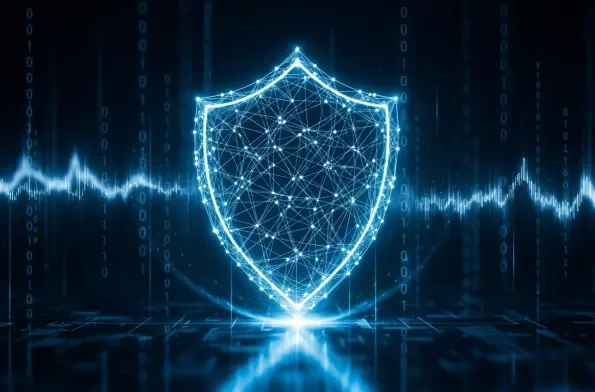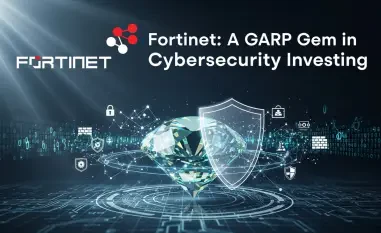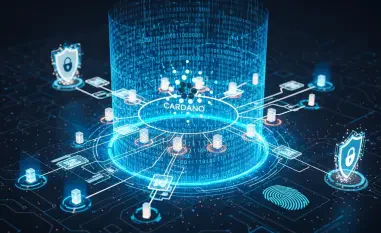In an era where digital transformation defines business success, a staggering statistic reveals the harsh reality: over 60% of small and medium-sized enterprises face at least one cyber attack annually, with many unable to recover from the financial blow. This alarming trend underscores a critical challenge for companies across industries, as cybercriminals deploy increasingly sophisticated tactics to exploit vulnerabilities. The devastating impact of data breaches, ransomware, and phishing schemes can cripple operations overnight, making cybersecurity not just a technical concern but a fundamental pillar of business survival.
The purpose of this guide is to equip businesses with actionable, multi-layered strategies to safeguard their operations and data against the relentless wave of cyber threats. By following the outlined approaches, companies can build robust defenses that mitigate risks and ensure continuity in a hostile digital landscape. This resource aims to empower organizations to stay ahead of attackers by adopting cutting-edge technologies and fostering a culture of vigilance.
The importance of proactive cybersecurity cannot be overstated, as the cost of inaction often includes not only financial losses but also irreparable damage to reputation and customer trust. With attackers constantly evolving their methods, businesses must prioritize integrated solutions that combine advanced tools with human expertise. This guide serves as a comprehensive roadmap to navigate the complex world of cyber defense, offering practical steps to protect critical assets.
The Rising Threat of Cybercrime: Why Action Is Critical
The digital realm has become a battleground for businesses, with cyberattacks escalating in both frequency and sophistication. From ransomware that locks critical systems to data breaches exposing sensitive information, no industry remains untouched by these threats. Companies, regardless of size, face a constant barrage of attempts to infiltrate their networks, often with devastating consequences if defenses falter.
Beyond the immediate disruption, the long-term effects of cybercrime include eroded customer confidence and regulatory penalties that can hinder growth. A single incident can unravel years of hard work, as seen in cases where businesses struggle to regain their footing after losing proprietary data. This reality demands urgent attention to fortify digital perimeters against an enemy that operates without borders or predictability.
Adopting proactive and comprehensive cybersecurity strategies is no longer optional but essential for safeguarding operations. The shift toward preemptive measures ensures that potential vulnerabilities are addressed before exploitation occurs. Businesses must commit to a mindset of continuous improvement in their security posture to counter the persistent and evolving nature of cyber threats.
Understanding the Cyber Landscape: Why Protection Matters More Than Ever
Cyber threats have undergone a dramatic evolution, transitioning from rudimentary viruses to complex, targeted attacks orchestrated by well-funded groups. Techniques such as deepfake technology and advanced persistent threats now challenge even the most prepared organizations. This dynamic environment requires an understanding of how attackers adapt and exploit emerging technologies to bypass traditional defenses.
The financial and reputational damage from a single breach can be catastrophic, often costing millions in direct losses and causing long-term brand erosion. Small businesses, in particular, may lack the resources to recover, with many closing within months of a significant incident. Larger enterprises, while better equipped, still face substantial setbacks when customer trust is compromised due to exposed data.
A notable shift in cybersecurity involves integrating technology with human oversight to create a more resilient defense system. Solutions that combine automated threat detection with expert analysis offer a balanced approach to tackling sophisticated attacks. This trend highlights the necessity for businesses to invest in holistic strategies that address both technical and human elements of security.
Key Cybersecurity Strategies for 2025: A Multi-Layered Defense
Building a robust cybersecurity framework requires a multi-faceted approach to counter the diverse tactics employed by cybercriminals. The following strategies provide a structured defense mechanism, ensuring that businesses are prepared for a wide range of threats. Each method focuses on a specific layer of protection, creating a comprehensive shield against digital intrusions.
These actionable steps are designed to address vulnerabilities at various levels, from network architecture to employee behavior. By implementing these measures, organizations can significantly reduce the likelihood of successful attacks. The guide below breaks down each strategy with detailed instructions to facilitate adoption and effectiveness.
The combination of advanced tools and proactive policies ensures that businesses remain agile in responding to new challenges. A layered defense not only deters potential attackers but also minimizes damage if a breach occurs. This section offers a clear path to strengthening cybersecurity through deliberate and informed actions.
Strategy 1: Leverage Managed Detection and Response (MDR) Services
Managed Detection and Response (MDR) services offer a powerful solution by outsourcing cybersecurity monitoring to specialized experts who operate around the clock. These professionals use cutting-edge tools to detect and neutralize threats before they escalate into full-blown crises. For businesses lacking in-house expertise, MDR provides a critical lifeline to maintain security without overwhelming internal resources.
The continuous surveillance provided by MDR ensures that anomalies are identified and addressed in real time, reducing the window of opportunity for attackers. This service often includes threat hunting, incident response, and detailed reporting to keep organizations informed. Such comprehensive coverage is vital for maintaining operational integrity in a landscape where threats emerge at all hours.
Maximizing MDR Effectiveness
Selecting an MDR provider with advanced technology and a proven track record is crucial for achieving optimal results. Businesses should evaluate potential partners based on their ability to customize solutions and integrate with existing systems. A provider’s expertise in handling industry-specific threats can make a significant difference in defense capabilities.
Additionally, transparency in communication and regular updates on threat landscapes enhance the value of MDR services. Companies must ensure that chosen providers offer actionable insights and swift response mechanisms. This alignment guarantees that the investment in MDR translates into tangible security improvements.
Integrating MDR with Existing Systems
Seamless integration of MDR with current IT infrastructure is essential to avoid disruptions and ensure cohesive protection. Businesses should work closely with providers to map out compatibility requirements and address any gaps in coverage. This process often involves aligning MDR tools with existing firewalls, antivirus software, and other security measures.
Proper integration minimizes the risk of blind spots that attackers could exploit during transitions, ensuring a more secure environment. Regular testing and updates to the integrated system help maintain its effectiveness over time. A well-coordinated setup ensures that MDR enhances rather than complicates the overall security framework.
Strategy 2: Implement Zero Trust Architecture
Zero Trust Architecture operates on the principle of “never trust, always verify,” requiring authentication for every user, device, and application attempting to access a network. This model eliminates assumptions about trust based on location or prior access, ensuring strict verification at every interaction. It is particularly effective in environments with remote workforces and cloud-based systems.
By adopting Zero Trust, businesses can prevent lateral movement by attackers who gain initial access to a network. This approach limits the potential damage of a breach by isolating systems and requiring continuous validation. Its implementation marks a shift toward a more granular and secure method of managing digital access.
Building a Zero Trust Framework
Creating a Zero Trust framework begins with segmenting networks to restrict access to sensitive areas based on user roles and responsibilities. Businesses should deploy identity verification tools and enforce policies that limit privileges to the minimum necessary for each task. This segmentation reduces the attack surface and contains threats within isolated zones.
Additionally, continuous monitoring of network traffic and user behavior helps detect deviations that might indicate unauthorized activity. Implementing encryption for data in transit and at rest further strengthens the framework. These steps collectively establish a robust barrier against internal and external threats.
Overcoming Implementation Challenges
Adopting Zero Trust often presents challenges such as high initial costs and the complexity of overhauling existing systems, which can be daunting for many organizations. Businesses may struggle with budget constraints or resistance to change from staff accustomed to less restrictive access models. Addressing these hurdles requires careful planning and phased rollouts to manage expenses and disruptions.
Engaging stakeholders early and communicating the long-term benefits of enhanced security can ease the transition. Partnering with experienced consultants to tailor Zero Trust solutions to specific organizational needs also mitigates implementation difficulties. Patience and persistence are key to embedding this architecture successfully.
Strategy 3: Strengthen Access with Multi-Factor Authentication (MFA)
Multi-Factor Authentication (MFA) adds a vital layer of security by requiring multiple forms of verification before granting access to systems or data. Beyond traditional passwords, MFA incorporates elements like biometric scans, security tokens, or one-time codes sent to mobile devices. This approach significantly reduces the risk of unauthorized entry, even if credentials are stolen.
The prevalence of password-related breaches highlights the necessity of MFA in modern cybersecurity, as attackers often exploit weak or reused passwords to infiltrate networks, making additional authentication steps a critical defense. Businesses adopting MFA can protect sensitive information from being compromised through common attack vectors.
Choosing the Right MFA Solutions
Selecting an MFA solution involves evaluating options such as fingerprint recognition, hardware tokens, or app-based authentication methods. Each type offers unique benefits, with biometrics providing convenience and tokens ensuring high security for critical systems. Businesses must assess their specific needs and user capabilities when deciding on a solution.
Compatibility with existing platforms and ease of deployment are crucial considerations in the selection process, as they ensure a seamless transition and implementation. Solutions that integrate smoothly with current workflows minimize friction during adoption. A well-chosen MFA system balances robust protection with user accessibility.
Encouraging User Compliance
Ensuring employee adherence to MFA protocols can be challenging, especially if the process feels cumbersome or disrupts daily tasks. Businesses should focus on educating staff about the importance of this security measure and its role in protecting both personal and organizational data. Clear communication helps build a shared commitment to compliance.
Offering user-friendly tools and providing support during the initial rollout can significantly encourage adoption while ensuring a smooth transition for all users involved. Simplifying the authentication process without compromising security, such as using push notifications, also aids in maintaining productivity. Regular feedback sessions can identify and address any ongoing concerns.
Strategy 4: Secure Endpoints with Endpoint Detection and Response (EDR)
Endpoint Detection and Response (EDR) focuses on protecting devices such as laptops, smartphones, and tablets that serve as potential entry points for cyberattacks. With remote work becoming the norm, these endpoints are often outside traditional network perimeters, increasing their vulnerability. EDR solutions provide continuous monitoring and rapid response to suspicious activities on these devices.
The ability of Endpoint Detection and Response (EDR) to detect and mitigate threats in real time is crucial for minimizing damage from breaches, especially in today’s cybersecurity landscape. These tools analyze device behavior, identify anomalies, and automatically isolate compromised endpoints to prevent further spread. This proactive stance is indispensable for businesses with distributed workforces.
Deploying EDR for Remote Workforces
Implementing EDR for remote employees involves selecting tools that offer comprehensive visibility across all devices, regardless of location. Solutions should include features for threat detection, incident response, and detailed forensics to trace the origin of attacks. Businesses must ensure that EDR platforms are scalable to accommodate fluctuating workforce sizes.
Regular updates to EDR software and policies help address new vulnerabilities as they emerge, ensuring that systems stay protected against evolving threats. Training IT teams to interpret EDR alerts and act swiftly enhances the effectiveness of these deployments. A well-executed EDR strategy ensures that remote endpoints remain secure without constant oversight.
Balancing Security and Productivity
Striking a balance between robust endpoint security and employee efficiency is a common concern with EDR implementations. Overly restrictive measures can slow down workflows or frustrate users, leading to potential workarounds that undermine protection. Businesses should tailor EDR settings to minimize unnecessary interruptions while maintaining strong defenses.
Providing clear guidelines on acceptable device usage and security protocols helps align employee behavior with organizational goals, ensuring that everyone understands the expectations and boundaries. Testing EDR configurations in pilot phases before full deployment can identify areas where adjustments are needed. This approach ensures that security measures support rather than hinder daily operations.
Strategy 5: Prioritize Employee Security Awareness Training
Human error remains a leading cause of cyber breaches, making employee security awareness training a cornerstone of effective defense. Many attacks, such as phishing or social engineering, exploit unsuspecting staff to gain access to systems. Regular education programs equip employees with the knowledge to recognize and respond to these threats appropriately.
Training initiatives foster a culture of accountability, where every individual understands their role in protecting organizational assets. By addressing the human element of cybersecurity, businesses can reduce the likelihood of costly mistakes. Ongoing learning ensures that staff remain vigilant as attack methods continue to evolve.
Identifying Phishing and Social Engineering
Employees must be trained to spot phishing emails and social engineering tactics, which often disguise malicious intent as legitimate communication. Common signs include urgent requests for sensitive information, unfamiliar senders, or suspicious links. Real-world examples during training sessions can illustrate how subtle these attempts can be.
Simulated phishing exercises provide practical experience, allowing staff to test their ability to identify fraudulent messages in a controlled environment. Feedback from these simulations helps refine recognition skills and reinforces best practices. Such hands-on learning is critical for building confidence in handling real threats.
Creating a Culture of Vigilance
Establishing a culture of vigilance requires consistent reinforcement through workshops, updates, and open discussions about cybersecurity. Businesses should encourage employees to report suspicious activities without fear of repercussions, fostering an environment of trust. Regular refreshers keep security top of mind amid daily responsibilities.
Incorporating gamification or rewards for proactive security behaviors can further engage staff in maintaining vigilance. Leadership involvement in training programs demonstrates the organization’s commitment to cybersecurity at all levels. This collective effort transforms security from a burden into a shared priority.
Summarizing the Core Defenses: A Quick Reference
For businesses seeking a concise overview of essential cybersecurity measures, the following list captures the five key strategies discussed:
- Adopt Managed Detection and Response (MDR) for expert monitoring and threat neutralization.
- Implement Zero Trust Architecture for strict access control and continuous verification.
- Use Multi-Factor Authentication (MFA) to secure logins with additional layers of protection.
- Deploy Endpoint Detection and Response (EDR) for comprehensive device protection.
- Invest in regular employee training to combat human error and enhance threat recognition.
This combination of approaches addresses diverse threats, from technical exploits to behavioral vulnerabilities, ensuring a robust defense mechanism. A multi-layered defense ensures that no single point of failure can compromise the entire system. Businesses are encouraged to integrate these strategies for maximum resilience.
Looking Ahead: Cybersecurity Trends and Challenges
Emerging trends in cybersecurity point to the growing integration of artificial intelligence in both defense and offense. AI-driven tools enhance threat detection by analyzing vast datasets for patterns, while attackers also leverage similar technology to craft more deceptive campaigns. Staying ahead requires businesses to adopt these innovations while anticipating their misuse by adversaries.
Regulatory compliance pressures and evolving attack methods present ongoing challenges for organizations. New data protection laws demand stricter adherence, often with severe penalties for non-compliance. Simultaneously, cybercriminals refine their tactics, necessitating constant updates to security protocols to match these developments.
Adaptability remains a cornerstone of effective cybersecurity, as static defenses quickly become obsolete in a dynamic threat landscape. Businesses must commit to regular assessments and strategy refinements to address future risks. This forward-thinking mindset ensures preparedness for challenges that extend beyond the current horizon.
Final Call to Action: Build Cyber Defenses Now
Reflecting on the journey through these cybersecurity strategies, it became evident that businesses had to act with urgency to fortify their digital environments against escalating threats. The implementation of multi-layered defenses proved to be a necessary endeavor to prevent devastating breaches. Each step taken strengthened the foundation for operational security and resilience.
Looking back, the exploration of MDR, Zero Trust, MFA, EDR, and employee training offered a robust toolkit for protection. Moving forward, businesses should consider partnering with cybersecurity experts to conduct thorough audits of their current systems. This step would reveal hidden vulnerabilities and provide a clear path for targeted improvements.
As a final consideration, allocating resources for continuous monitoring and periodic strategy updates emerged as a critical next action. Engaging in industry forums and staying informed about emerging threats would further enhance preparedness, ensuring that companies remain agile and secure in an ever-changing digital landscape.













